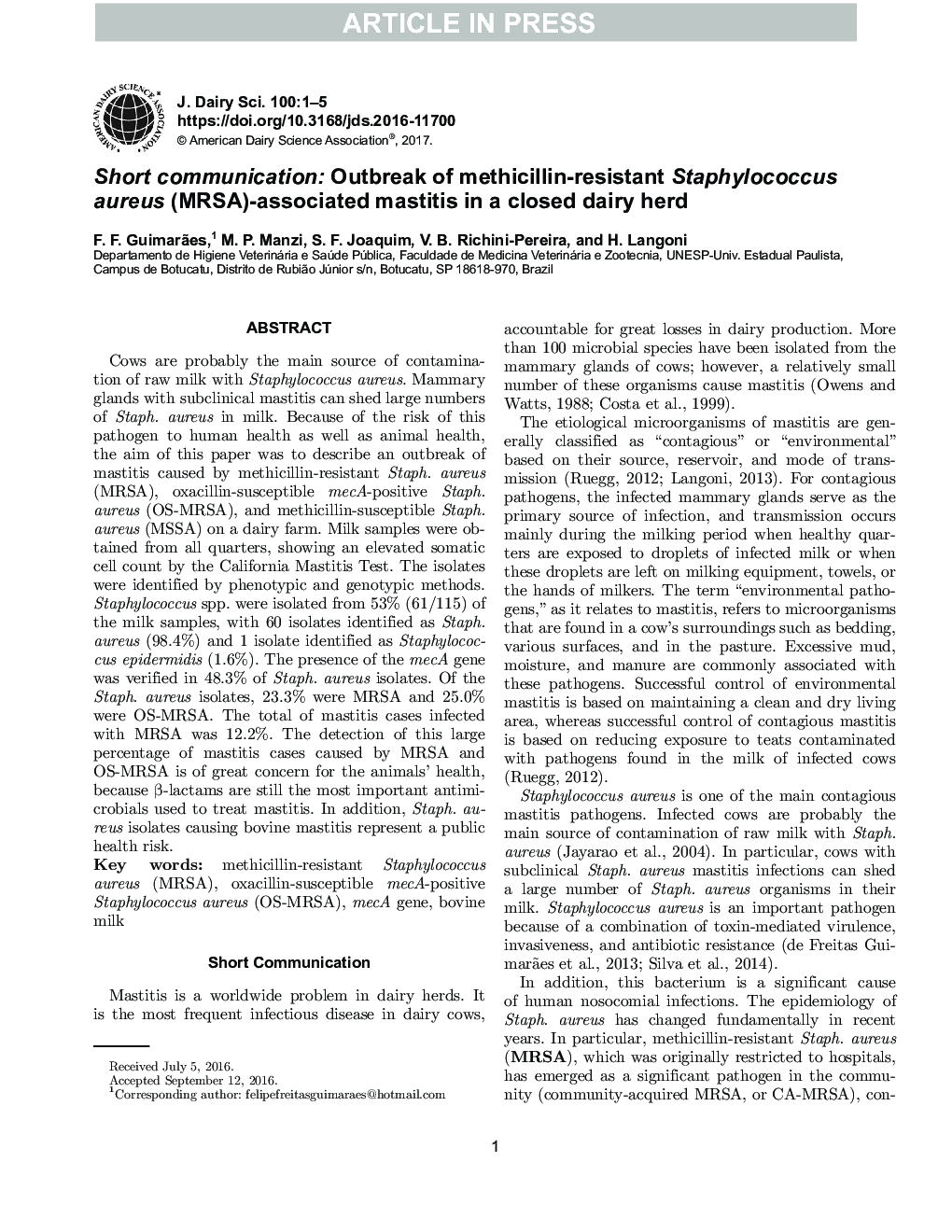| Article ID | Journal | Published Year | Pages | File Type |
|---|---|---|---|---|
| 5542608 | Journal of Dairy Science | 2017 | 5 Pages |
Abstract
Cows are probably the main source of contamination of raw milk with Staphylococcus aureus. Mammary glands with subclinical mastitis can shed large numbers of Staph. aureus in milk. Because of the risk of this pathogen to human health as well as animal health, the aim of this paper was to describe an outbreak of mastitis caused by methicillin-resistant Staph. aureus (MRSA), oxacillin-susceptible mecA-positive Staph. aureus (OS-MRSA), and methicillin-susceptible Staph. aureus (MSSA) on a dairy farm. Milk samples were obtained from all quarters, showing an elevated somatic cell count by the California Mastitis Test. The isolates were identified by phenotypic and genotypic methods. Staphylococcus spp. were isolated from 53% (61/115) of the milk samples, with 60 isolates identified as Staph. aureus (98.4%) and 1 isolate identified as Staphylococcus epidermidis (1.6%). The presence of the mecA gene was verified in 48.3% of Staph. aureus isolates. Of the Staph. aureus isolates, 23.3% were MRSA and 25.0% were OS-MRSA. The total of mastitis cases infected with MRSA was 12.2%. The detection of this large percentage of mastitis cases caused by MRSA and OS-MRSA is of great concern for the animals' health, because β-lactams are still the most important antimicrobials used to treat mastitis. In addition, Staph. aureus isolates causing bovine mastitis represent a public health risk.
Related Topics
Life Sciences
Agricultural and Biological Sciences
Animal Science and Zoology
Authors
F.F. Guimarães, M.P. Manzi, S.F. Joaquim, V.B. Richini-Pereira, H. Langoni,
